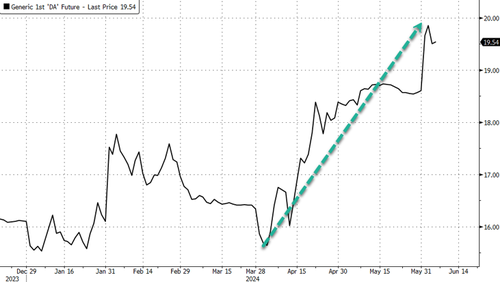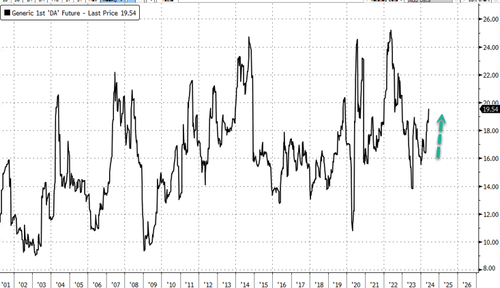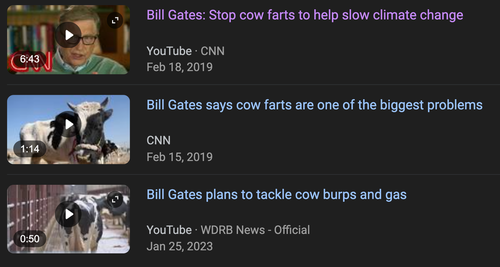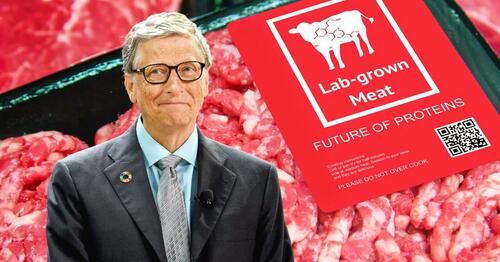The latest US Department of Agriculture data shows bird flu has infected at least 80 dairy herds across ten states. There are growing concerns about rising cow mortalities from the virus and the risk of farmers culling cows to stop the spread. This could ignite economic stress across the farm belt and unleash a supply shock.
Reuters spoke with a USDA spokesperson who was aware of H5N1 virus-related deaths among cow herds but said that most cows recovered. No official figures have been provided on the number of cow mortalities in South Dakota, Michigan, Texas, Ohio, and Colorado.
Here's more on the cow deaths:
In South Dakota, a 1,700-cow dairy sent a dozen of the animals to slaughter after they did not recover from the virus, and killed another dozen that contracted secondary infections, said Russ Daly, a professor with South Dakota State University and veterinarian for the state extension office who spoke with the farm.
"You get sick cows from one disease, then that creates a domino effect for other things, like routine pneumonia and digestive issues," Daly said.
A farm in Michigan killed about 10% of its 200 infected cows after they too failed to recover from the virus, said Phil Durst, an educator with Michigan State University Extension who spoke with that farm.
Michigan has more confirmed infections in cattle than any state as well as two of three confirmed cases of US dairy workers who contracted bird flu.
In Colorado, some dairies reported culling cows with avian flu because they did not return to milk production, said Olga Robak, spokesperson for the state Department of Agriculture.
Ohio Department of Agriculture spokesperson Meghan Harshbarger said infected cows have died in Ohio and other affected states, mostly due to secondary infections.
The Texas Animal Health Commission also confirmed that cows have died from secondary infections at some dairy operations with avian flu outbreaks.
Officials could not provide figures for the number of statewide cow mortalities.
New Mexico's state veterinarian, Samantha Uhrig, said farmers increasingly culled cows due to decreased milk production early in the outbreak, before the US even confirmed bird flu was infecting cattle. Culling decreased as farmers learned that most cows gradually recovered, she said. -Reuters
Last month, the USDA informed farmers lactating dairy cattle are not eligible for interstate transportation, which has snarled the dairy supply chain.
Southern dairy farms that raise baby calves from more northern states until they're ready to be returned and milked have been impacted the most by delays in shipping when a herd tests positive for the virus, according to Joe Armstrong, a professor of cattle production at the University of Minnesota.
"Some of these systems are built to constantly move animals, and if you can't move them, you run out of space really fast," Armstrong said. "This is big money." -Bloomberg
Shipping delays could intensify following the USDA's announcement of expanded testing for dairy cows, which is likely to reveal more infections.
"What's clear is this disease has really slowed down the interstate movement of cattle," Rep. Gabe Vasquez (D-NM) told Bloomberg's Skye Witley.
Traders are watching rising milk futures in Chicago, up more 27% since early April.
Here's a larger timeframe for milk futures.
The dairy industry could be in the beginning stages of a mess as farmers cull cows and supply chains become snarled due to bird flu.
One major concern is whether the virus jumps from dairy to beef cows. If that's the case, then culling beef cows to stop the spread could catapult retail prices even higher because the nation's total herd population has collapsed to 1951 levels.
Can you guess which billionaire has been advocating to ban cow farts?
He also has fake meat to sell.
As we noted days ago, if the government starts claiming that culling the nation's dairy and beef cows is the only way to combat bird flu, it will raise alarm bells that there might be an underlying agenda at play.
Source link







